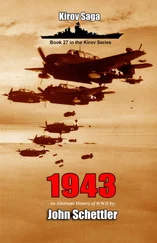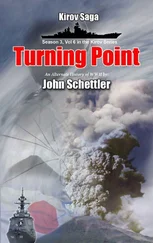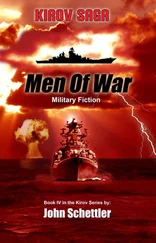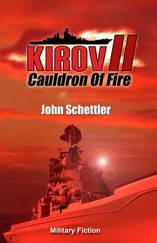John Schettler - Golem 7
Здесь есть возможность читать онлайн «John Schettler - Golem 7» весь текст электронной книги совершенно бесплатно (целиком полную версию без сокращений). В некоторых случаях можно слушать аудио, скачать через торрент в формате fb2 и присутствует краткое содержание. Год выпуска: 2011, ISBN: 2011, Издательство: The Writing Shop Press, Жанр: Фантастика и фэнтези, на английском языке. Описание произведения, (предисловие) а так же отзывы посетителей доступны на портале библиотеки ЛибКат.
- Название:Golem 7
- Автор:
- Издательство:The Writing Shop Press
- Жанр:
- Год:2011
- ISBN:978-0-984-94650-1
- Рейтинг книги:5 / 5. Голосов: 1
-
Избранное:Добавить в избранное
- Отзывы:
-
Ваша оценка:
- 100
- 1
- 2
- 3
- 4
- 5
Golem 7: краткое содержание, описание и аннотация
Предлагаем к чтению аннотацию, описание, краткое содержание или предисловие (зависит от того, что написал сам автор книги «Golem 7»). Если вы не нашли необходимую информацию о книге — напишите в комментариях, мы постараемся отыскать её.
Golem 7 — читать онлайн бесплатно полную книгу (весь текст) целиком
Ниже представлен текст книги, разбитый по страницам. Система сохранения места последней прочитанной страницы, позволяет с удобством читать онлайн бесплатно книгу «Golem 7», без необходимости каждый раз заново искать на чём Вы остановились. Поставьте закладку, и сможете в любой момент перейти на страницу, на которой закончили чтение.
Интервал:
Закладка:
Her keel had been laid well before the war, in 1934, and then work was suddenly halted five months later when the engineers received instructions that the plans had been altered. Germany was quietly intent on violating the mandated limits imposed on her shipbuilding program in the Treaty of Versailles. And so the keel was laid afresh in May of 1935, and the dock workers jokingly referred to her as “the beast with two backs.”
She had a classic, yet elegantly beautiful design, sleek lines with a sharp prow, yet with ominous mass that spoke of restrained power. As the plans were fleshed out in iron and steel, her decks mounted up and up, until her silhouette filled out into a massive, threatening profile, soon to be bristling with enormous guns housed in three turrets, two fore and one aft, each with three eleven inch barrels.
She was named after a Prussian field Marshall, as was her sister ship Scharnhorst , and both ships were built for that perfect combination of speed and power that would define their role in the next war that was even now brooding over the horizon.
Well behind Britain in terms of naval power, Germany had launched herself on an ambitious rearmament plan. While the Kriegsmarine would never be a force that could openly challenge the full might of the Royal Navy as they had done in the First World War, it would nonetheless be a potent threat, particularly to the vital cross Atlantic shipping routes England depended on.
A battlecruiser by design, Gneisenau was strong enough to smash anything that could catch her, and fast enough to outrun anything bigger. She was a dark panther, designed explicitly to hunt down the wallowing buffalo, lumbering steamers and cargo ships that would cluster in convoys, their sea lord’s eyes straining against the gray horizon at fearful night watches, ever watching for the wake of a U-Boat periscope cutting through the swelling tops of the waves.
The destroyer and cruiser escorts routinely assigned to convoy duty would rush in to ward off the wolf packs, but when a ship of the size and power of Gneisenau appeared they would be overmatched. A ship’s fighting power could be roughly equated to the size of the shells she could hurl at an opposing enemy. By comparison British destroyers mounted small guns firing a shell that was only 4.5 inches wide. Their main threat to shipping would come from mad dash torpedo attacks, but otherwise they were designed for defensive roles, principally anti-submarine work.
The light cruiser was a larger ship mounting six inch guns, but the German battlecruiser’s powerful weapons were nearly twice as big, and she had speed as well, able to steam as fast as either of these enemy ship classes. She would make short work of a British light cruiser. A heavy cruiser, mounting eight inch barrels might stand with her for a time, but would soon be overpowered and in grave danger. British heavy cruisers had three turrets with two eight inch guns in each, or a total of 6 barrels. Some had a fourth turret bringing that total to eight guns. Gneisenau , could easily engage two such ships with confidence and still have good prospects for victory. Her armor might shrug off hits received from a cruiser, but her bigger eleven inch guns would deliver powerful, accurate blows that could ravage the smaller ship, doing serious damage.
Only a British battleship carrying guns in the range of fourteen to sixteen inches could pose any real threat to Gneisenau , and so her very existence in the German order of battle, along with other ships like her, had forced the Royal Navy to assign a battleship to convoy escort duty whenever possible. There were never enough of the larger ships to go around, and so the German strategy was to break out into the Atlantic and look for the less well protected convoys where no battleship was present. In this they often received aid from able U-boat captains, who could find prey and vector in the larger raider to join the slaughter.
The Scharnhorst and Gneisenau were often teamed together, like two fearsome big cats leading a chariot of chaos. They had given the British fits in the operations against Norway, where they had dueled briefly with the proud battlecruiser Renown in an inconsequential engagement. Later they broke out into the Atlantic and had been prowling with bad intent for several months. There they had orders to leave convoys escorted by battleships alone, but there were plenty of other fish in the sea, and they made a good haul, sinking 22 vessels accounting for over 115,000 tons before they pulled into Brest, and of these Gneisenau had accounted for 14 of the kills.
Now they licked their wounds in Brest, with Gneisenau making minor repairs while her sister ship underwent a second major refit of her boilers, which had been temperamental throughout that ship’s sea life. Given their demonstrated success as convoy raiders, the Germans were planning an even bigger operation in a few weeks time. Admiral Günther Lütjens would lead out their newest ship, built in style and design much like the Gneisenau , but even more massive, with larger fifteen inch guns and heavier armor. She was christened Bismarck , and would hopefully become a terror at sea to plague the Royal Navy for years to come. It was hoped that Scharnhorst and Gneisenau would sortie again soon to join the mighty Bismarck , where they would form a battlegroup powerful enough to take on any convoy they encountered, even those escorted by the heavier British ships.
Alas, Scharnhorst would not be ready, but Kapitan Erich Fein had high hopes that he would lead his own sortie with Gneisenau . If he could join with Bismarck and her cruiser escort Prince Eugen the Germans could assemble the most formidable task force they had sailed since Jutland.
This threat had not escaped the notice of the Royal Navy either, and the Admiralty had been sailing out a powerful task force to watch Brest, lay mines in the area, and hopefully keep the German ships bottled up. In this effort Force H at Gibraltar played the principle role though, as First Sea Lord Admiral Pound would try to explain to the Prime Minister later that month, their attention was constantly divided by the urgency of operations in the Mediterranean as well.
The heart of Force H, battlecruiser Renown , carrier Ark Royal , and cruiser Sheffield, had only just returned to Gibraltar after another supply run out to Malta, and their tired crews were settling in to their bunks at midnight on April 5th, 1941 knowing they were bound for sea yet again the following day—this time to the Atlantic. A cable had been received from the Admiralty indicating that the big German ships at Brest were being readied for operations. “ Consider battlecruisers will probably leave Brest tonight,” it read, as a local agent had been made aware that the Germans planned to move the battlecruiser Gneisenau to a mooring position out in the harbor.
And so the sailors slept fitfully that night, tucked into bunks and hanging in their hammocks, knowing they would put to sea again to stand blockade duty and wait for any sign of the German raiders in the week ahead. But the British spy had only half the story. The real reason that the big German ship was being moved was the discovery of an unexploded bomb near her berth at dock #8, dropped in a recent night raid by the RAF. By the time they discovered this, Force H had already sailed to stand watch, yet no German ships would appear.
The following morning a small trawler chugged into the port, a fisherman in a leaky boat hoping to ride out some worsening weather in a safe harbor. Even as the Germans made ready to carefully move Gneisenau , the trawler headed for the mooring pier, her skipper’s eyes intent on one particular spot, as though no other would do. The Harbor Master paid the small boat no attention, noting it’s arrival in his log and then taking a call from the tug captains ready to move Gneisenau .
Читать дальшеИнтервал:
Закладка:
Похожие книги на «Golem 7»
Представляем Вашему вниманию похожие книги на «Golem 7» списком для выбора. Мы отобрали схожую по названию и смыслу литературу в надежде предоставить читателям больше вариантов отыскать новые, интересные, ещё непрочитанные произведения.
Обсуждение, отзывы о книге «Golem 7» и просто собственные мнения читателей. Оставьте ваши комментарии, напишите, что Вы думаете о произведении, его смысле или главных героях. Укажите что конкретно понравилось, а что нет, и почему Вы так считаете.












